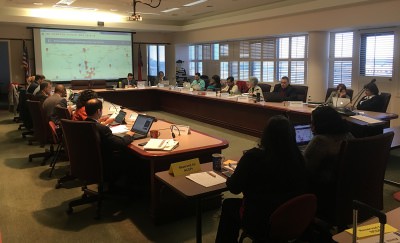
You’ve seen a child struggling with school. You know they need help. You’ve heard the acronym “IEP” here and there, and maybe you’ve heard of a “504 plan” as well. But what’s the difference, and how do you know if this particular child needs one of these plans? And if they do, which one? Finally, if a child is determined eligible for services, will that take the child out of the regular classroom?
Let’s break it down
The right to a quality education for children with disabilities is protected primarily by two laws, the Individuals with Disabilities Education Act (IDEA), and Section 504 of the Rehabilitation Act. Both laws generally say that children with disabilities should have accommodations or modifications at school if they need them in order to participate like non-disabled children at school. But the IDEA also says that children with disabilities who qualify should get not just accommodations and modifications, but also “special education.”
There are different requirements under each law that must be met in order for a child to qualify for services.
504 plans
Under Section 504 of the Rehabilitation Act, if a child has a disability that substantially limits a major life activity, the child qualifies for a 504 plan. Major life activities include learning, working, concentrating, communicating, hearing, speaking, walking, breathing, performing manual tasks, handling stressful situations, interacting with others, engaging in social relationships, and many more. Mitigating measures cannot be considered in determining eligibility for a 504 plan. In other words, if a child is taking medication or using hearing aids, wheelchairs, assistive technology, etc. to lessen the effects of the disability, they continue to be eligible based on their impairment.
If the child is eligible for a 504 plan, he or she will receive accommodations and modifications that address the child’s limits, such as being seated near the front of the classroom, or getting extra time to take tests.
Individualized Education Plans
To qualify for services under IDEA, a child must have a disability that 1) has an adverse effect on educational performance and 2) requires specially designed instruction. If a child meets these requirements, he or she qualifies for an Individualized Education Plan, or IEP.
An IEP will give the child accommodations, modifications, and special education. Under IDEA, special education is defined as “specially designed instruction, at no cost to the parents, to meet the unique needs of a child with a disability.” But how do we know if the child requires this “specially designed instruction?” The IEP team must determine whether the child needs the “content, methodology or delivery” of instruction changed so the child can access the regular education curriculum and keep up with non-disabled peers.
The team may consider whether a special education teacher is needed to provide the instruction the child needs. That would be a change in delivery. Or suppose a child is not learning to read with the program taught in the classroom. This might indicate a need for a change in methodology. Or if a child is having trouble solving math word problems and needs to read them at a lower grade level, the need for change in content could be indicated. A young child who has trouble processing information that is spoken may need a change to a visual delivery, such as pictures of directions, schedules, and concepts. That could be considered specialized instruction as well.
If a child is getting specially designed instruction, does this mean the child has to leave the classroom?
No.
In fact, the IDEA says students with IEPs should be educated in the least restrictive environment, meaning that “to the maximum extent appropriate, children with disabilities shall be educated with children who are not disabled, and special classes, separate schooling, or other removal of children with disabilities from the regular education environment occurs only when the nature of the disability is such that education in the regular classes with the use of supplementary aids and services cannot be achieved satisfactorily.” 20 U.S.C. § 1412(a)(5).
So a special education teacher may come to the regular education classroom, or he or she may meet with the regular education teacher frequently, giving that teacher instruction about how to modify the content, methodology, or delivery of instruction for a particular child. And most schools have “inclusion classrooms,” which allow regular education and special education teachers to teach collaboratively in the same classroom.
Resources
While getting a child the services they need may seem complicated, remember that there are resources to help you in North Carolina. These resources include:
- Disability Rights North Carolina
- Exceptional Children’s Assistance Center (ECAC)
- Legal Aid of North Carolina
- N.C. Department of Instruction
- Your school system’s Exceptional Children’s program director
- Private attorneys and advocates
Contact Disability Rights NC for information and referral at our toll free number 877-235-4210 or access self-advocacy resources for parents on our website at www.disabilityrightsnc.org.




